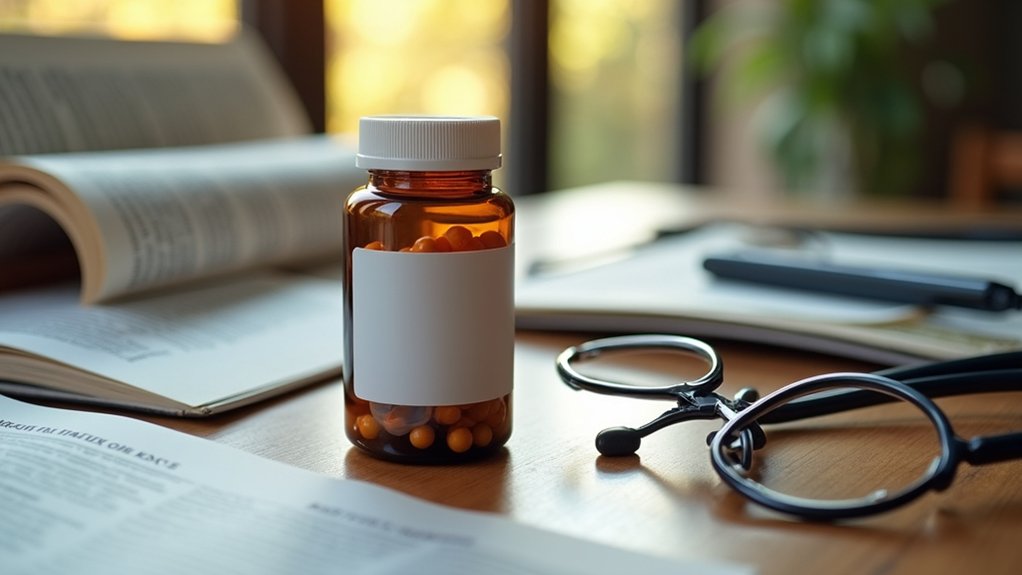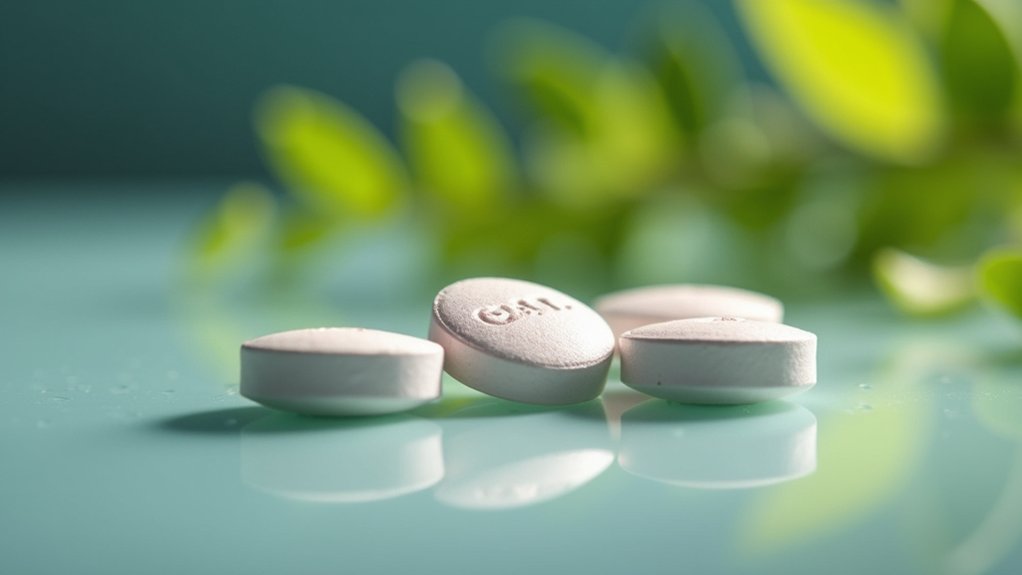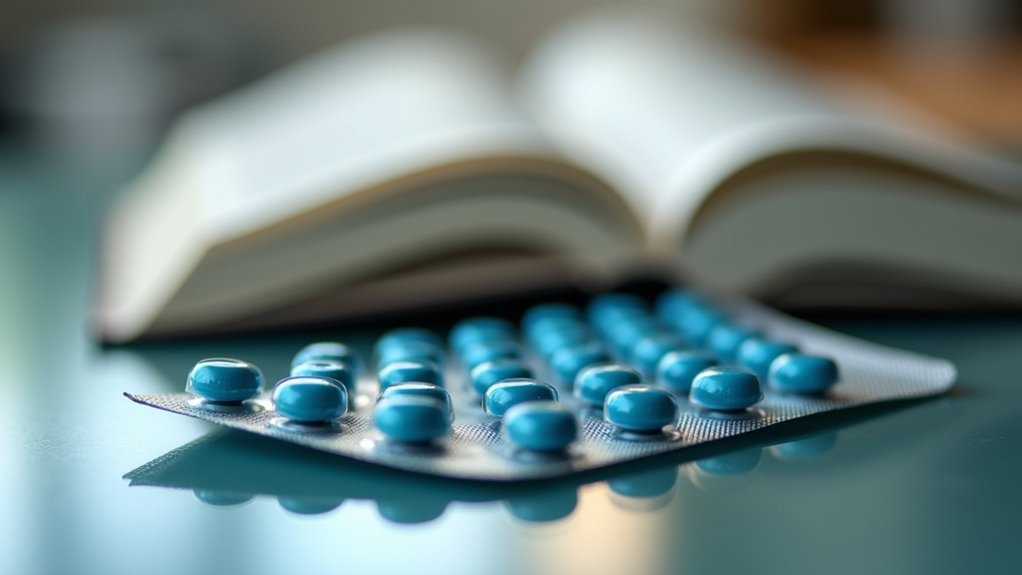The Different Kinds of Erectile Dysfunction Pills
Erectile dysfunction medications primarily include four PDE5 inhibitors: Sildenafil (Viagra), Tadalafil (Cialis), Vardenafil (Levitra), and Avanafil (Stendra). These medications work by increasing blood flow to the penis during sexual stimulation, with effectiveness rates between 65-85%. Each medication has distinct characteristics regarding onset time (15-60 minutes) and duration (4-36 hours). Common side effects include headache, flushing, and nasal congestion. Consulting a healthcare provider is essential to determine the most appropriate option based on individual health factors and lifestyle needs.
Main Points
- The four FDA-approved ED medications are Sildenafil (Viagra), Tadalafil (Cialis), Vardenafil (Levitra), and Avanafil (Stendra).
- Tadalafil offers the longest duration of up to 36 hours, while Avanafil works fastest within 15-30 minutes.
- Common side effects include headache, flushing, nasal congestion, and indigestion, with serious reactions requiring immediate medical attention.
- ED medications are effective for 65-85% of men but should never be taken with nitrates due to dangerous blood pressure drops.
- Individual responses vary based on ED severity, underlying health conditions, and medication timing relative to meals.
Sildenafil

Sildenafil, the active ingredient in Viagra, revolutionized erectile dysfunction treatment when it received FDA approval in 1998.
As a phosphodiesterase type 5 (PDE5) inhibitor, it works by increasing blood flow to the penis during sexual stimulation.
Typical dosages range from 25mg to 100mg, taken approximately one hour before sexual activity. The medication’s effects typically last 4-6 hours, though individual responses vary.
Sildenafil should not be combined with nitrate medications, as this combination can cause dangerous drops in blood pressure.
Common side effects include headache, flushing, indigestion, and nasal congestion.
Less common adverse reactions may include visual disturbances and priapism.
Tadalafil

While sildenafil marked the first major breakthrough in PDE5 inhibitors, tadalafil (Cialis) offers distinct advantages that have earned it a significant place in erectile dysfunction treatment.
Tadalafil’s extended duration of action—up to 36 hours—has led to its nickname as the “weekend pill,” providing greater spontaneity for users.
- Longer half-life of 17.5 hours, compared to sildenafil’s 4-hour window
- Less affected by food intake, allowing consistent absorption regardless of meals
- Available in daily low-dose formulations (2.5mg, 5mg), enabling continuous therapeutic blood levels
These pharmacokinetic properties make tadalafil an excellent option for men who prefer less planning for sexual activity.
Vardenafil

Developed after both sildenafil and tadalafil, vardenafil (Levitra) represents the third major PDE5 inhibitor approved for erectile dysfunction treatment in the early 2000s.
Like its predecessors, vardenafil works by enhancing blood flow to the penis, but with a slightly different molecular structure.
Vardenafil typically takes effect within 30-60 minutes, with effects lasting 4-5 hours. Studies show it may work effectively at lower doses than sildenafil for some patients.
Common side effects include headache, flushing, and nasal congestion.
Warning: Vardenafil should not be taken with nitrate medications due to potentially dangerous blood pressure drops, a contraindication shared with all PDE5 inhibitors.
Avanafil
As the newest addition to the PDE5 inhibitor family, avanafil (Stendra) received FDA approval in 2012, making it the most recent erectile dysfunction medication to enter the market.
This rapid-acting medication offers several advantages over earlier generation erectile dysfunction therapies.
Key characteristics of avanafil include:
- Faster onset of action, typically taking effect within 15-30 minutes
- Lower incidence of side effects, particularly reduced visual disturbances and back pain
- Effectiveness lasting up to 6 hours, providing a window of opportunity comparable to sildenafil
Avanafil demonstrates high selectivity for the PDE5 enzyme, which contributes to its improved side effect profile while maintaining clinical efficacy.
The working of Erectile Dysfunction pills

To understand how erectile dysfunction medications function in the body, one must first grasp the physiological process of erection. When sexually stimulated, the brain signals the release of nitric oxide in penile tissues, activating an enzyme that increases blood flow.
| Medication Class | Mechanism of Action | Onset Time | Duration | Common Side Effects |
| PDE5 Inhibitors | Block PDE5 enzyme | 15-60 min | 4-36 hrs | Headache, flushing |
| Alprostadil | Direct vasodilator | 5-20 min | 1-2 hrs | Penile pain, dizziness |
| Testosterone | Hormone replacement | Gradual | Ongoing | Acne, mood changes |
| Apomorphine | Central activator | 10-25 min | 1-2 hrs | Nausea, yawning |
| Herbal supplements | Various/unproven | Variable | Variable | Variable/unknown |
ED medications primarily work by enhancing this natural process, not creating artificial arousal.
Side effects of Erectile Dysfunction pills
The side effects of erectile dysfunction medications range from mild inconveniences to potentially serious complications, depending on the specific medication and individual patient factors.
Most common reactions occur as the medication affects blood flow throughout the body, not just the genital region.
- Common mild effects include headaches, facial flushing, nasal congestion, and temporary vision changes.
- Digestive issues such as indigestion, nausea, and occasional diarrhea may occur within hours of taking the medication.
- Serious adverse reactions require immediate medical attention: priapism (erection lasting >4 hours), sudden vision/hearing loss, or severe drop in blood pressure.
Key differences
While all erectile dysfunction medications aim to improve sexual function, significant differences exist between the major options available on the market today.
The primary variations occur in onset time, duration of effect, and food interactions. Sildenafil (Viagra) typically works within 30-60 minutes and lasts 4-6 hours, while Tadalafil (Cialis) offers a longer duration—up to 36 hours.
Vardenafil (Levitra) and Avanafil (Stendra) fall between these extremes.
Some medications, particularly Sildenafil, work less effectively when taken with high-fat meals.
Others, like Tadalafil, remain largely unaffected by food consumption, making them more flexible for daily use.
Which ED pill should I take
Choosing an appropriate erectile dysfunction medication depends primarily on individual health factors, lifestyle preferences, and specific sexual patterns. Patients should consult healthcare providers who can review medical history, current medications, and underlying conditions before prescribing ED medication.
- Health considerations – Certain ED medications are contraindicated with nitrates, alpha-blockers, or specific cardiovascular conditions.
- Onset and duration – Medications like sildenafil work within 30-60 minutes with 4-5 hour effects, while tadalafil can last 36 hours.
- Side effect profiles – Each medication carries different potential side effects, from headaches and flushing to muscle pain or visual disturbances.
Effectiveness rates, insurance coverage, and personal response also influence the best selection.
Frequently Asked Questions
Many patients seeking treatment for erectile dysfunction share common concerns and uncertainties about medication options, effectiveness, and safety profiles.
Common questions typically address ideal timing for medication use, potential side effects, drug interactions, and differences between prescription options.
Understanding these medications requires knowledge of their distinct onset times: sildenafil and vardenafil work within 30-60 minutes, while tadalafil may take effect within 30 minutes but offers a longer duration of up to 36 hours.
Patients often inquire about concurrent alcohol consumption, which doctors generally advise limiting as it may reduce effectiveness and increase side effect risk, particularly hypotension when combined with PDE5 inhibitors.
Recent Web Stories
As interest in erectile dysfunction treatments continues to grow online, numerous web stories have emerged covering breakthrough treatments, medication comparisons, and patient experiences.
The digital landscape offers valuable insights for those seeking information on ED medications.
The digital landscape provides essential knowledge for individuals researching erectile dysfunction treatment alternatives.
- The Mayo Clinic’s thorough analysis of PDE5 inhibitors comparing sildenafil, tadalafil, and vardenafil effectiveness timelines
- Harvard Health’s investigation into plant-based alternatives showing promising results in preliminary clinical trials
- Johns Hopkins Medicine’s patient outcome study revealing satisfaction rates across different medication options
These resources provide evidence-based information, empowering patients to make informed decisions about treatment options, potential side effects, and expected outcomes.
Related Articles
Related articles about erectile dysfunction medications often explore important side effects, including vision changes, seizures, and swelling that patients should monitor.
Research comparing ED medications examines which options might be safest for different health profiles, with factors such as cardiovascular history and medication interactions determining best choices.
Clinical studies consistently demonstrate that FDA-approved erectile dysfunction pills work effectively for most men, though individual results vary based on underlying causes, proper dosage, and adherence to usage instructions.
Vision changes
While most men focus on the primary benefits of erectile dysfunction medications, unexpected vision changes represent a less common but potentially serious side effect that warrants attention.
These alterations in visual function can manifest in various ways and require immediate medical intervention.
- Blue-tinted vision (cyanopsia) occurs primarily with PDE5 inhibitors like sildenafil, creating a temporary blue haze that typically resolves within 24 hours.
- Decreased visual acuity may develop suddenly, affecting reading ability and distance vision.
- Non-arteritic anterior ischemic optic neuropathy (NAION) represents the most serious vision-related complication, potentially causing permanent vision loss in extreme cases.
Seizures (Convulsions)
Beyond visual disturbances, patients taking erectile dysfunction medications should be aware of rare but serious neurological complications such as seizures.
These convulsive episodes, characterized by uncontrolled electrical activity in the brain, have been reported in post-marketing surveillance of PDE5 inhibitors.
Risk factors include:
- Pre-existing seizure disorders
- Concurrent use of medications that lower seizure threshold
- Electrolyte abnormalities
- Dehydration

Symptoms may include involuntary muscle contractions, loss of consciousness, confusion, or temporary memory disruption following the event.
Healthcare providers should carefully evaluate patients’ neurological history before prescribing erectile dysfunction medications.
Swelling
Peripheral edema, a notable side effect of erectile dysfunction medications, manifests as the accumulation of fluid in tissues, particularly in the extremities.
This swelling occurs due to vasodilation effects that alter blood vessel permeability, allowing fluid to leak into surrounding tissues. Patients should be vigilant for signs of abnormal swelling while using these medications.
- Swelling typically appears in ankles, feet, and lower legs, often more pronounced after standing or sitting for extended periods.
- Moderate to severe edema may cause pitting (when pressed, the skin remains indented).
- Immediate medical attention is necessary if swelling is accompanied by chest pain or difficulty breathing.
What is the safest drug for Erectile Dysfunction?
When considering safety profiles among erectile dysfunction medications, several factors determine which options may present fewer risks for individual patients. Sildenafil (Viagra), tadalafil (Cialis), and vardenafil (Levitra) all demonstrate similar safety profiles for most men.
For patients with cardiovascular concerns, tadalafil may offer advantages due to its selective enzyme inhibition. Men taking nitrates or alpha-blockers should exercise caution with all PDE5 inhibitors.
The “safest” option varies by individual health profile:
- Heart conditions: Consult cardiologist first
- Hypertension: Lower-dose options preferred
- Diabetes: All FDA-approved options generally safe with monitoring
Medical supervision remains essential for determining best treatment.
Do Erectile Dysfunction pills work?
Clinical studies consistently demonstrate that erectile dysfunction medications do work for most men, with success rates ranging from 65-85% depending on the specific medication and underlying cause of ED.
These medications function primarily by enhancing blood flow to the penis, which is essential for achieving and maintaining erections.
- PDE5 inhibitors (Viagra, Cialis, Levitra) work within 30-60 minutes for most patients, with effects lasting from 4-36 hours.
- Individual response varies based on severity of ED, underlying health conditions, and medication interactions.
- Effectiveness may decrease over time for some men, requiring dosage adjustments or alternative treatments.
What ED pills work immediately?
No erectile dysfunction medications work truly “immediately,” despite marketing claims that suggest instant results. Most ED medications require time to metabolize and begin functioning in the body. Phosphodiesterase-5 (PDE5) inhibitors, the most common class of ED medications, have varying onset times, with some working faster than others.
| Medication | Typical Onset Time | Duration of Effect | Buy Now |
| Sildenafil (Viagra) | 30-60 minutes | 4-6 hours | Buy Sildenafil |
| Tadalafil (Cialis) | 30-60 minutes | 24-36 hours | Buy Tadalafil (Cialis) |
| Avanafil (Stendra) | 15-30 minutes | 6-12 hours | Buy Avanafil (Stendra) |
| Vardenafil (Levitra) | 30-60 minutes | 5-8 hours | Vardenafil (Levitra) |
For fastest results, patients should take medication on an empty stomach and avoid high-fat meals which may delay absorption.
Frequently Asked Questions
Can I Take ED Pills With Alcohol?
Consuming alcohol with ED medications is generally not recommended. Alcohol can worsen side effects and reduce effectiveness. Patients should consult their healthcare provider about specific interactions between their prescribed medication and alcohol consumption.
How Long Before Sex Should I Take ED Medication?
Ideal timing varies by medication. Most ED medications should be taken 30-60 minutes before sexual activity. Viagra typically needs 30-60 minutes, Cialis works in 30 minutes to 2 hours, and Levitra requires about 60 minutes.
Are ED Pills Covered by Insurance?
Insurance coverage for ED medications varies by policy. Many plans consider them lifestyle drugs and exclude coverage. Some may cover them with prior authorization if medically necessary for conditions like diabetes or prostate treatment.
Can ED Pills Help With Premature Ejaculation?
Some ED medications may help with premature ejaculation as a secondary benefit by reducing sensitivity or extending arousal phases. However, specific treatments designed for premature ejaculation are generally more effective for this particular condition.
Do ED Pills Work if the Cause Is Psychological?
Psychological ED may respond positively to medication. Pills can create physical erections regardless of mental causes, potentially reducing anxiety and breaking the negative cycle. However, therapy addresses underlying issues more thoroughly for many patients.
Conclusion
Erectile dysfunction pills offer effective treatment options for men experiencing ED, with sildenafil, tadalafil, vardenafil, and avanafil providing reliable solutions with varying durations and onset times. The choice between medications should be based on individual health factors, lifestyle preferences, and consultation with healthcare providers. While these medications can notably improve quality of life, understanding their mechanisms, potential side effects, and contraindications remains essential for safe, appropriate use.

